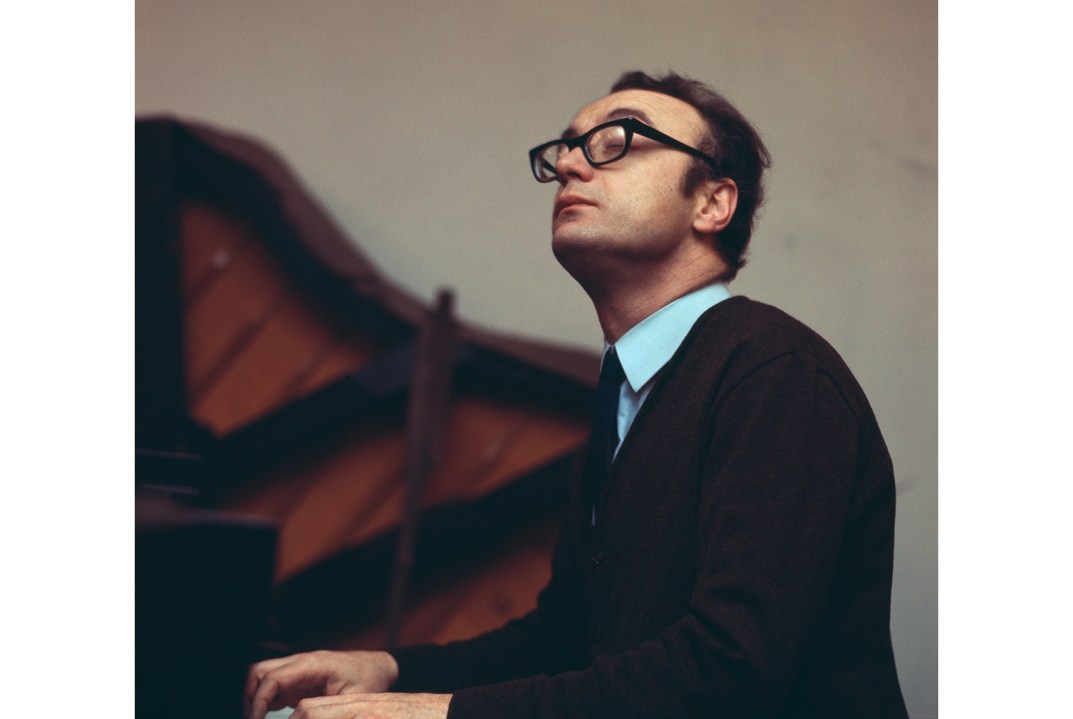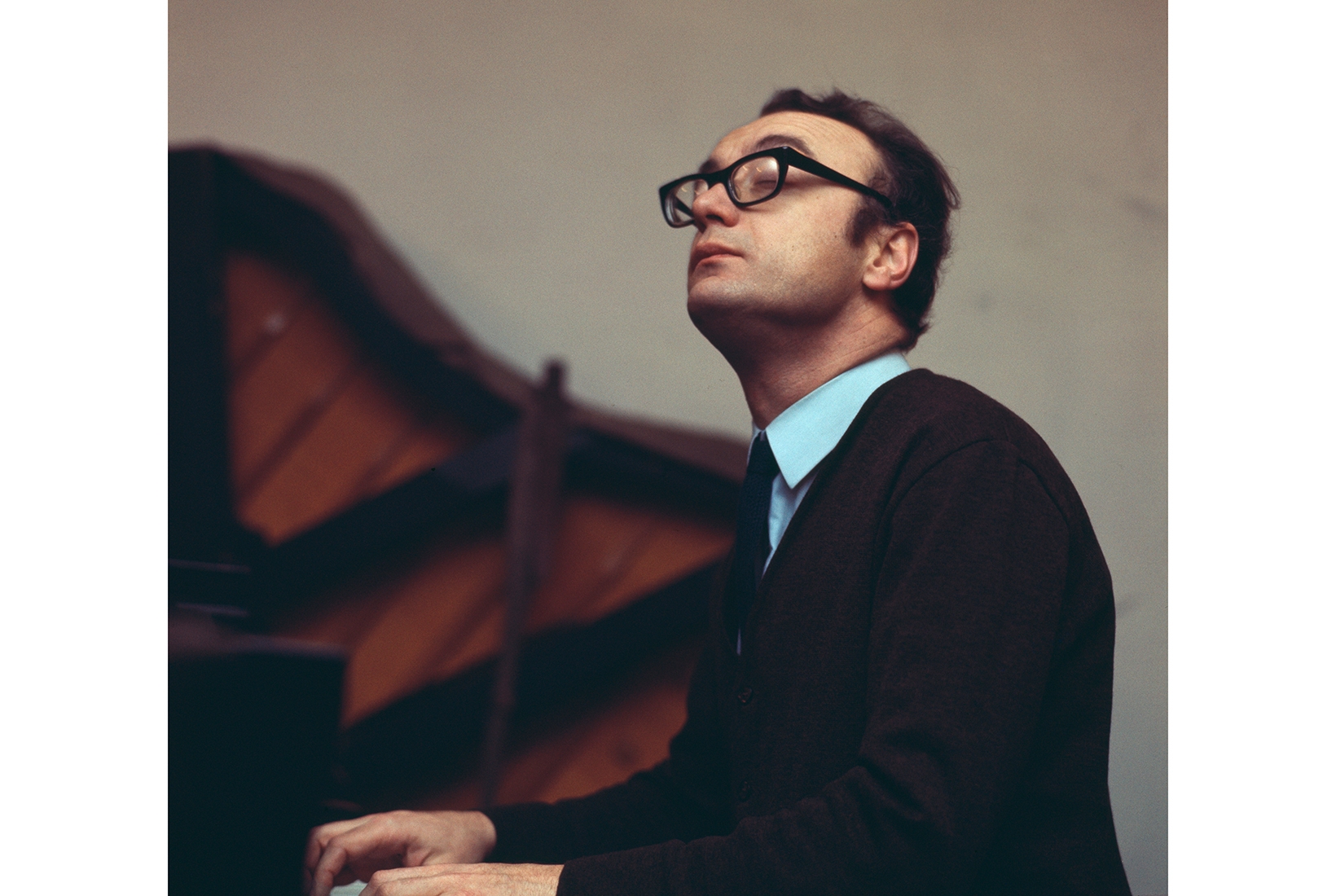One of the few social activities not yet prohibited under lockdown laws is four-handed piano playing.
I don’t mean sitting side-by-side at one keyboard. That would risk infection and, if snitched on, the possibility of sharing a prison cell with Piers Corbyn. No, the four hands must be divided equally across two pianos, and the instruments must be end-to-end. Safely isolated in this manner — perhaps three or four metres apart — the ivories can be tickled for as long as you want.
I’ve been a devoted four-hand piano player all my life — due entirely to the limitations of the two I was born with. On one keyboard I insist on playing secondo, which usually involves laying down an approximate wash of sound while the primo player dazzles with melodic showmanship. Secondo is a place of relative anonymity, which suits me fine.
There’s a sizeable repertoire of music written for this combination, from Mozart to Kurtag. Schubert alone wrote four or five masterpieces for two players at one keyboard. Fauré, Debussy, Ravel, Rachmaninov, Dvorak and Brahms all pitched in with some wonderful additions to the canon. There should be enough to keep anyone happy for a lifetime.
And yet.
There is another, almost limitless ocean of music for more than one player, and more than one piano. From about 1780 to 1910 it was commonplace for all genres of music to be arranged or transcribed for an almost limitless combination of players. Within a very short time of its publication in 1888, for instance, Tchaikovsky’s passionate and magisterial Fifth Symphony had been arranged twice for one piano and one pianist; for one piano and two pianists; for two pianos and four hands; and two pianos and eight hands.
I’ve been a devoted four-hand piano player all my life – due entirely to the limitations of the two I was born with
I know this because, about ten years ago, I stumbled on the eight-hand version in an Amsterdam bookshop. At the time I had a penchant for seeking out such shops: most large cities had one. None felt long for this world.
My two favourites were Musikhaus Doblinger in Vienna, presided over — at least in my memory — by a one-legged old man who looked like Brahms; and the backroom of a bookshop in Flask Walk in Hampstead, where I picked up some old scores that had belonged to the pianist Myra Hess. One by one, these shops either folded or gave up on the dwindling number of hobby pianists wanting to search out forgotten scores.
The height of amateur piano playing was probably the late 19th century when no respectable middle-class home would have been without an instrument. In the days before recorded music you had a negligible chance of listening to a new Schumann or Brahms symphony unless you were lucky enough to live in a sizable city with its own orchestra. For many people, their only hope of hearing these works was to play them themselves — preferably with others.
The last remaining second-hand music shop I know in London has a basement room (near Marylebone Station) piled from floor to ceiling with old scores. On virtually every visit I emerge with a piece of treasure. Quite often they are long-discarded copies of four-handed music from the public music libraries that many London boroughs had until they, like the dusty old booksellers, shut up shop.
And then the internet happened.
The world wide web is the hobbyist’s playground. It was only a matter of time before the global community of people who are even more obsessed than me with collecting old scores would create a virtual space in which to do so. And thus it was that a Canadian former conservatory
student, Edward W. Guo, set about establishing a repository of crowd-sourced music in 2006. Think of it as a Wikipedia of scores.
Guo named it after Ottaviano Petrucci, a Renaissance music publisher. Today it is more commonly known as the International Music Score Library Project (IMSLP, rhymes with gymslip). Anyone with modest technical skills can upload any score — the library is reported to have more than half a million pieces by 20,000 composers — just as anyone can download them. It’s all free — though if you stump up an annual subscription of around £20 you can escape the 15-second download delay that acts as a spur to contribute something.
All that’s then needed is a comb binder and a double-sided printer. Suddenly you have at your fingertips more music than you could ever imagine — or, at least, all the music that is out of copyright. (This varies from country to country. Canadian law works on music staying in copyright until 50 years after a composer’s death: in other jurisdictions it’s longer.)
This is where it all gets a bit mind-blowing for a piano duettist. The catalogue of music originally written for piano, four hands, runs to 1,400 scores. But now go looking for all the music arranged for four hands at one piano; there are another 2,000.
You can bash your way through symphonies by Mozart, Bruckner, Mendelssohn, Elgar, Beethoven or Mahler. There is, for the brave-hearted, the Rite of Spring. More approachable would be Mozart’s Requiem; or the Marriage of Figaro; or, say, Schubert’s Octet.
It’s when you get to eight hands on two keyboards that the fun begins. Try Mozart’s Jupiter Symphony. It’s a piece you’ll have doubtless listened to dozens of times. But try sight-reading through the finale and you realise just how fiendishly complex it is. If you get through on the first attempt without the wheels falling off, you’re a much, much better musician than I am. Or anyone I’ve yet tried it with.
The same is true of almost anything by Brahms — so sweeping and natural to the ear, but mind-bogglingly unintuitive (especially rhythmically) when you try to work out exactly how it’s built. So your time with these pieces is not only immense fun, but also wonderfully instructive.
My current piano partner is the supposedly retired Oxford music professor Susan Wollenberg. She can read almost anything you place in front of her. This year we celebrated Beethoven’s 250th anniversary (pre-lockdown) by playing every symphony in sequence.
In more socially distanced, two piano form we’ve recently treated ourselves to the Bach D minor Chaconne, Elgar’s Enigma Variations and the Brahms Haydn Variations.
Highs? The Goldberg Variations for two players at two pianos, if only because it would for ever be beyond my technique even to imagine tackling with a mere two hands.
Lows? The one piece to have defeated us so far was the Liszt B minor Sonata, arranged for two pianos by Camille Saint-Saëns. We began together, and may even have ended together. In the middle a young Chinese student — perhaps imagining this was an eccentric kind of performance art —wandered in and sat down. I still have night sweats thinking what we put him through. It wasn’t pretty.
But we amateurs don’t play to be listened to. We play for the love of it, which is, after all, what ‘amateur’ means. And the fact that it is, for the present moment, one of the few things two people can legally do indoors together makes the pleasure even greater.






Comments